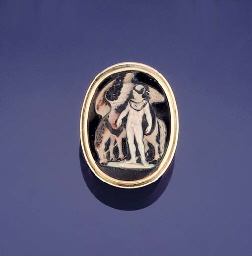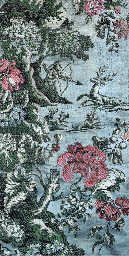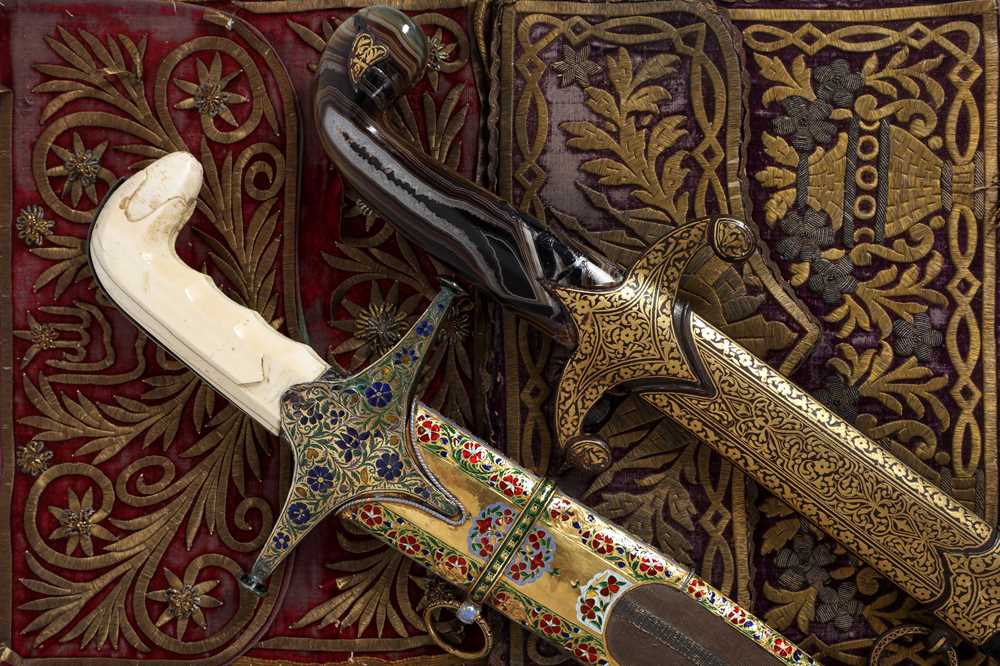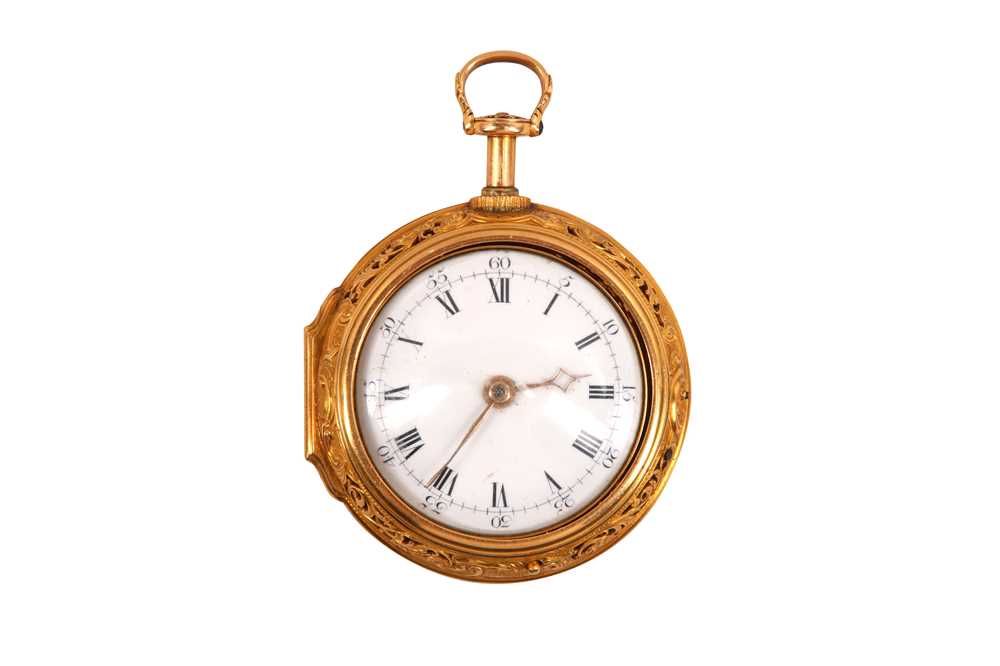A fine 18th-Century German compound box-type microscope, signed G.F. Brander fecit Aug. Vind. , undated, c. 1775, the box -- 28.2 x 20.2 x 11.5cm. (11 1/8 x 8 x 4½in.) ; the optical tube -- 25cm (9 7/8in.) long, 5cm. (2in.) dia. See Illustrations The large hexagonal base is made of beech and other woods, ebonized on the outer surfaces except for the underneath. It rests on four bun feet that are made of wood painted in gold lacquer. From the centre of the top rises a turned pillar (24.5cm. high) over which slides a brass collar that carries a stout threaded ring, into which screws the optical tube. On the upper part of the pillar are inscribed six lines numbered in roman numerals I-VI to which the sliding collar is set according to the number of the objective lens being used, I being the lowest power and VI the highest. Three accesories are fixed to the upper surface of the box: at one end is a sprung stage to hold transparent specimen slides; sub-stage illumination of the specimen is achieved by removing a panel at the end of the box to reveal a plane mirror in a wooden mount that swivels inside the box base turned on an axis controlled by a pair of knurled knobs on the outside. At the other end of the base is fixed a rotating wheel with an ivory disc for dark solid objects and an ebony band for light objects. No specimens remain, although there is evidence of glue that has been used to fix them. Central to one side of the box is a short turned pillar to support a super-stage bull's-eye lens mounted in a U-bracket on a rod. In the part of the box under the rotating wheel is a sliding drawer with a spring catch and ivory knob. The lift-out tray is covered in crimson cloth and locations are provided for six objective lenses in brass cells numbered I to VI ; the simple lenses are all present. In addition, there are three lieberkuhn mirrors that screw onto the ends of the objective cells. Specimen slides of boxwood, each to hold four specimens, are provided. Those with a punched number, 1 to 4, are for transparent specimens between mica discs. Those numbered 5 and 6 are for opaque specimens ( some now lost ). A round holly-wood box contains mica covers and brass split-rings for use with the slides. In the bottom section of the drawer are the bull's-eye lens, brass tweezers and brass forceps. Three round boxes of holly-wood contain graticules cut by a diamond point on glass discs (2.3cm. dia.): a) two crossed lines; b) micrometer ruling each division 1 Paris line (=2.25mm); a net of 0.7mm squares. The optical tube is made of ivory and brass and covered in black fishskin. It has a wide screw thread for attaching to the collar on the pillar. The nosepiece, eyepiece mount, and dust cap are of ivory. The eye lens and field lens are double convex, and with the lowest power objective a clear magnification of over x10 may be had.
A fine 18th-Century German compound box-type microscope, signed G.F. Brander fecit Aug. Vind. , undated, c. 1775, the box -- 28.2 x 20.2 x 11.5cm. (11 1/8 x 8 x 4½in.) ; the optical tube -- 25cm (9 7/8in.) long, 5cm. (2in.) dia. See Illustrations The large hexagonal base is made of beech and other woods, ebonized on the outer surfaces except for the underneath. It rests on four bun feet that are made of wood painted in gold lacquer. From the centre of the top rises a turned pillar (24.5cm. high) over which slides a brass collar that carries a stout threaded ring, into which screws the optical tube. On the upper part of the pillar are inscribed six lines numbered in roman numerals I-VI to which the sliding collar is set according to the number of the objective lens being used, I being the lowest power and VI the highest. Three accesories are fixed to the upper surface of the box: at one end is a sprung stage to hold transparent specimen slides; sub-stage illumination of the specimen is achieved by removing a panel at the end of the box to reveal a plane mirror in a wooden mount that swivels inside the box base turned on an axis controlled by a pair of knurled knobs on the outside. At the other end of the base is fixed a rotating wheel with an ivory disc for dark solid objects and an ebony band for light objects. No specimens remain, although there is evidence of glue that has been used to fix them. Central to one side of the box is a short turned pillar to support a super-stage bull's-eye lens mounted in a U-bracket on a rod. In the part of the box under the rotating wheel is a sliding drawer with a spring catch and ivory knob. The lift-out tray is covered in crimson cloth and locations are provided for six objective lenses in brass cells numbered I to VI ; the simple lenses are all present. In addition, there are three lieberkuhn mirrors that screw onto the ends of the objective cells. Specimen slides of boxwood, each to hold four specimens, are provided. Those with a punched number, 1 to 4, are for transparent specimens between mica discs. Those numbered 5 and 6 are for opaque specimens ( some now lost ). A round holly-wood box contains mica covers and brass split-rings for use with the slides. In the bottom section of the drawer are the bull's-eye lens, brass tweezers and brass forceps. Three round boxes of holly-wood contain graticules cut by a diamond point on glass discs (2.3cm. dia.): a) two crossed lines; b) micrometer ruling each division 1 Paris line (=2.25mm); a net of 0.7mm squares. The optical tube is made of ivory and brass and covered in black fishskin. It has a wide screw thread for attaching to the collar on the pillar. The nosepiece, eyepiece mount, and dust cap are of ivory. The eye lens and field lens are double convex, and with the lowest power objective a clear magnification of over x10 may be had.














Try LotSearch and its premium features for 7 days - without any costs!
Be notified automatically about new items in upcoming auctions.
Create an alert